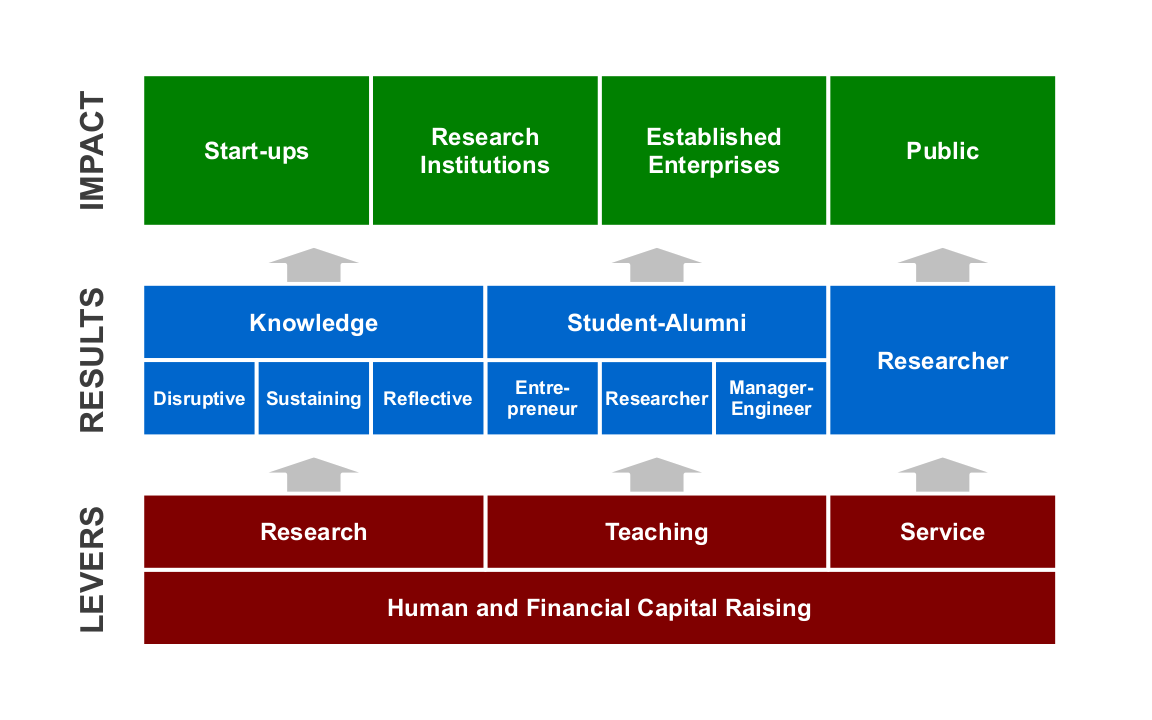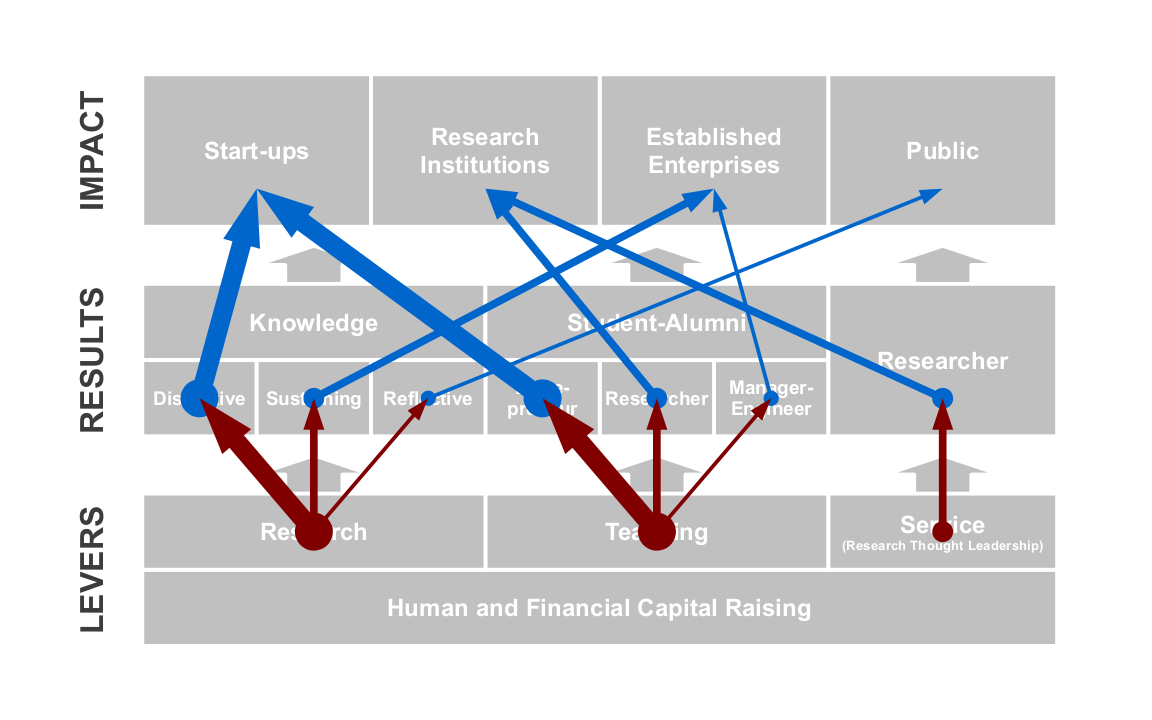Strategic Goals and Measures of our Research Group
With three new Ph.D. students this year and a strengthened relationship with Siemens CT (Corporate Technology, Siemens’ research arm), I had to clarify our research group goals, the mechanisms that help us reach these goals, and the metrics we steer by. Below, please find a graphics that illustrates the model that I came up with.
There are three layers resp. levels:
- Levers, the bottom layer. This is what we, as a research and teaching professorship do. We are fully in control of this (well, mostly). We perform research, we teach, and we perform research thought leadership, called service (like reviewing research papers submitted to journals or organizing and steering conferences).
- Results, the middle layer. Our activities create results. There is a direct connection between these results and what we do. As we perform research, we create knowledge (of various types). As we teach, we create student-alumni (also of various types and specializations). Finally, we influence other researchers (as they influence us).
- Impact, the top layer. The results we create have a purpose and that is to have a positive impact in the world, in general, and in Germany specifically. We want to help start-ups and established enterprises, we want help research institutions and we want to advance general societal understanding and behavior through our work.
I guess this model works for most research groups. It does not yet say what particular emphasis we make. That emphasis is depicted in the graphics below by the strengths of the arrows.
As you can see, our research emphasizes disruptive research and our teaching emphasis entrepreneurs. That’s a choice we make.
In practice, it isn’t that simple, of course. There are lots of constraints. For example, the graphics may suggest that we neglect incremental (sustaining) innovation and established enterprises. Of course we don’t; they are bread and butter. However, given a bit of additional time, we’d rather invest it into the next big thing and the next (yet small) start-up rather than adding to incremental knowledge.
You can find our choices reflected in the unusually strong emphasis on entrepreneurship and practical focus on shipping products (in teaching). Our courses ADAP, PROD, AMOS, and ARCH and the subsequent theses define a path from student to entrepreneur. At the end, through our business angel network, we help make the jump into a funded start-up. This does not create push-back from established companies, quite the opposite: Several of the established industry partners we work with are ready to become strategic investors in start-ups in their domain, furthering open innovation out of Friedrich-Alexander University.
It is an exciting time to be a student at FAU.
Now, if you are a student, dig in, and sign-up for the 2013 AMOS project (via http://startupinformatik.de), our lab course that gives you a first taste at real project work and shipping a product!


